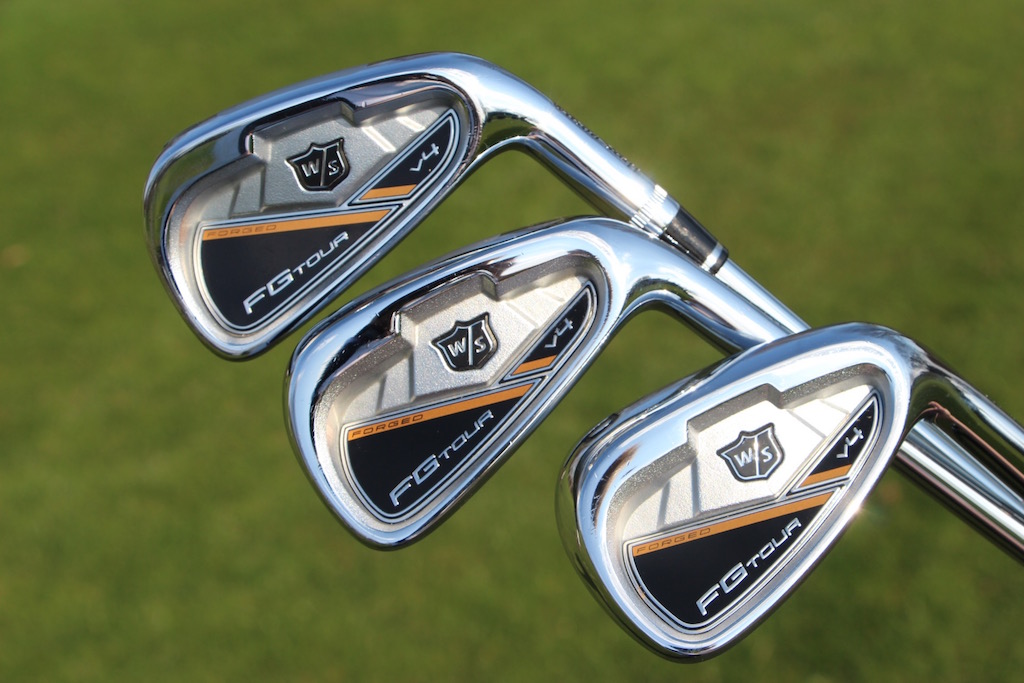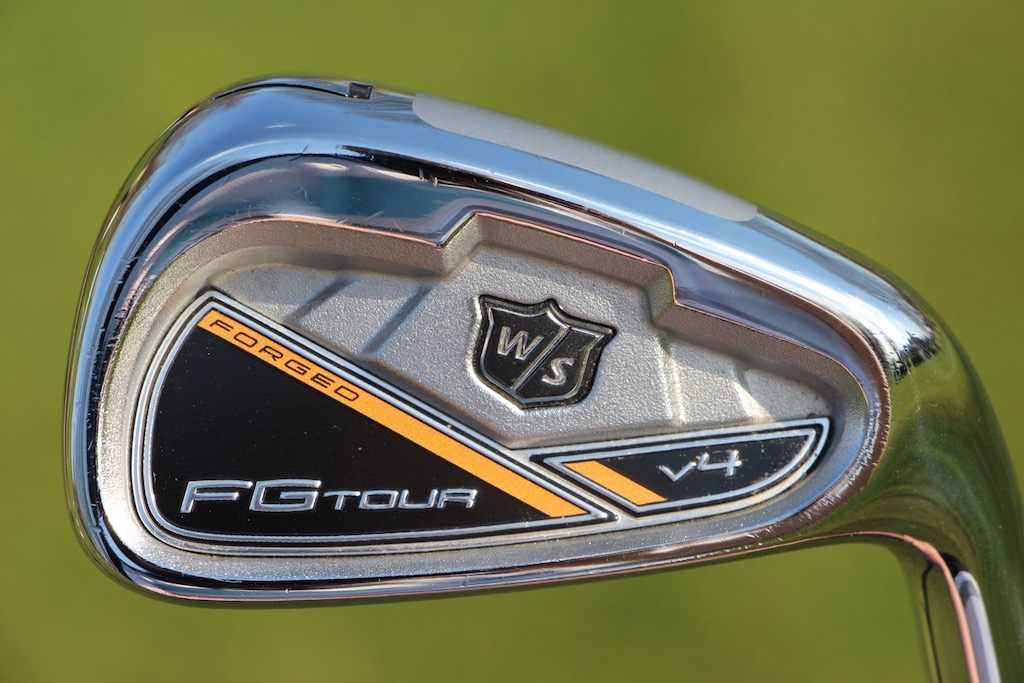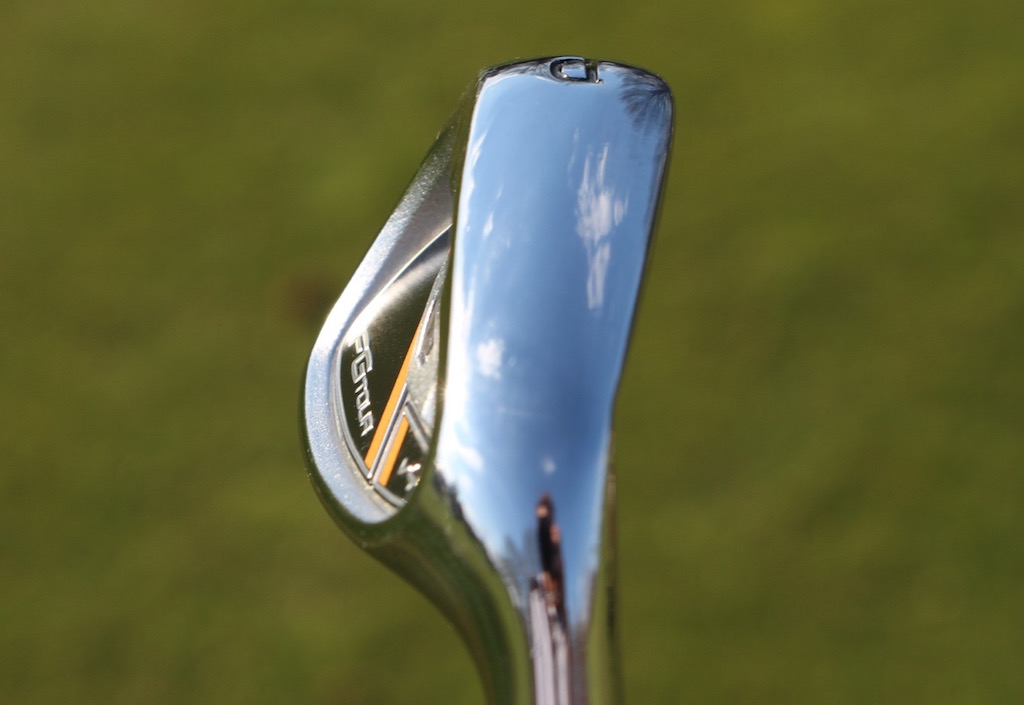Pros: Forged cavity back irons with a compact shape that use tungsten weights to boost launch and forgiveness.
Cons: They don’t feel as soft as other forged cavity back irons in their class. Slightly weaker lofts (47 degree pitching wedge) cause them to fly shorter than leading models.
Who they’re for: Better players looking for a set of modern, forged cavity back irons that are barely bigger than blades. They offer excellent workability and trajectory control.
The Review
If you’re a user of forged cavity back irons, you may have noticed that the amount of new models in the category have decreased. Modern iron design has trended toward larger, hot-faced irons in recent years, which have their perks — but they’re not for everyone. There’s a group of golfers who aren’t looking to hit their irons any farther. They’re satisfied with their current distance and accuracy, so they’re more concerned with looks, feel and trajectory control. If that’s you, read on.
Wilson currently offers three models of forged irons, the most intriguing of which is the FG Tour V4. They strike a sweet spot between the company’s larger FG Tour M3 irons, which trend on the larger side of players irons, and the company’s FG Tour 100 blade irons, which are best left to the most accomplished ball strikers — particularly those with shallow angles of attack.
I first hit the FG Tour V4 irons at the 2015 PGA Merchandise Show, and was quite impressed. I had a set built to my specifications, and spent the late winter and early sping testing them against similar models. My thoughts are broken up into the categories below.
Feel
Isn’t this every better player’s first question about a set of forged irons? The FG Tour V4 irons are forged from 8620 carbon steel, which is unusual. Most forged irons are made from softer metals like 1020 or 1025 carbon steel, and for that reason, the V4’s feel slightly firmer than leading models. The feel is consistent across the set, however, even in the 3-7 irons, which use 18-gram sole weights to lower their center of gravity (CG) for a higher launch and more forgiveness.
The slightly firmer feel didn’t bother me, and it’s definitely not a deal breaker if you’re interested in these irons. Users will still be able to tell when they slightly mishit a shot, which is exactly the feedback they’ll want.
Looks
The FG Tour V4 irons are one of the most compact forged cavity back irons on the market. Their most unique aesthetic features are their thicker-than-normal top lines, which gave me the feeling that these irons were more forgiving than their size indicated. More on that later.




It’s the absence of anything eye catching that makes the FG Tour V4 irons one of the most stunning new forged cavity back irons on the market. There’s minimal offset — almost none, actually — and the hosels of the irons blend beautifully with the top lines of the irons at address. The toe shape of the irons is neither boxy nor round, and the milled grooves sit centrally in the iron heads.
The aesthetics of the cavity — the part you don’t see at address — are quite bold. Manufacturers have trended toward silvers and grays with brighter accent colors in recent years, so the heavy black/gold look was more polarizing with my range buddies and playing partners than I anticipated.
Distance
The best indicator of the distance of a set of forged cavity back irons will fly is their lofts, and the FG Tour V4 irons are on the weak side. With stock lofts, the 3 iron is 21 degrees, the 6 iron is 31 degrees and the pitching wedge is 47 degrees. For that reason, golfers will likely hit the FG Tour V4 irons a little shorter than more popular models in their class such as Callaway’s Apex Pro (29-degree 6 iron) and Titleist’s 714 AP2 (30-degree 6 iron), which have similar blade lengths and also use tungsten in their designs to boost forgiveness.
Spec Chart
The good news is that the FG Tour V4 irons seem to fly a little longer than their stock lofts indicate, particularly the mid irons and short irons. I was able to hit those clubs just as far as my Nike VR Forged Pro Combo irons, which are 1-degree stronger in each club. But I struggled to get the same distance from the FG Tour V4’s 4 and 5 irons. The easy fix is to bend those irons — or even the whole set — 1-2 degrees stronger if you’re looking for more distance. Since the FG Tour V4 irons have very little offset, such a small change won’t be uncomfortable at address. I actually prefer a little offset in my irons, but again, that’s something personal to me.
Forgiveness
Golfers who play compact, forged cavity back irons know that when they mishit a shot, they will suffer a penalty. The FG Tour V4’s are no exception, but they do an admirable job of making slight mishits fly more like perfect shots. They certainly play “bigger,” or more forgiving than their size indicates — particularly in the 3-7 irons, which use 18-gram tungsten weights to lower the CG of the irons for a higher launch. Eighteen grams is a lot of tungsten, a material that currently carries a high price tag and usually results in a set of irons that cost more than $1,000. It’s impressive that Wilson has priced a stock set of the FG Tour V4 irons (4-PW, GW) at $899 with True Temper’s DG Pro shafts.
Wilson’s FG Tour V4 Utility




Many modern iron sets have a progressive design, which means that the 3 iron is the largest iron head in the set, and the clubs get noticeably smaller as the clubs get shorter. The size of the FG Tour V4 irons is very constant, which means that if you choose to play a 3 or 4 iron from the FG Tour V4 set, you will be hitting a very small club. For that reason, I suggest golfers consider Wilson’s FG Tour V4 Utility iron as the longest iron in their set, because it is a stunning performer. And regardless of what irons you play, you should consider the FG Tour V4 Utility if you’re into driving irons.



I tested a FG Tour V4 Utility — 3 iron (21 degrees) — and found that it gave me all the distance I could want from a club of that loft. It didn’t seem to matter if I slightly heeled or toed the club. It flew about 235 yards every time, which was the exact distance I needed it to go based on my set makeup. Like the rest of the FG Tour V4 irons, it was also quite workable, and easy to hit high and low, or draw or fade.
The FG Tour Utility iron is a little chunky at address when compared to slimmer models such as Callaway’s Apex UT, TaylorMade’s UDI and Titleist’s 712U, but it feels quite soft for a hollow-cavity iron and offers plenty of feedback to the player. It’s also a great option off the tee and the ground, thanks to its smart sole design.
Odds and Ends
Better golfers sometimes prefer specialty wedges over the pitching and gap wedges that come with irons sets, because the head sizes of specialty wedges are generally more compact. Their sole grinds are also usually more versatile on partial shots, and on pitch shots around the greens. The small size of the FG Tour V4 wedges, as well as their excellent sole designs, however, does not necessitate a switch.
I found the tour-inspired grind of the FG Tour V4 pitching wedge to be all I needed from a 47-degree club. Like all the FG Tour V4 irons, it resisted digging on full and half shots. It also resisted “sticking in the turf” on pitch shots. That performance can be attributed to the sole of the irons, which is heavily cambered, or rounded, and it offered great performance from both the fairway and rough.
With both the longer and shorter irons in the FG Tour V4 set set, it was easy to vary the trajectory. And because of their solid construction, I found no “hot spots” in them, and the wedges were no exception.
The FG Tour V4’s gap wedge comes stock at 51 degrees, the point at which most golfers start to look at specialty clubs. If that’s more of a full-shot club for you than a chipping club, I’d recommend using the set gap wedge. If you’re more interested in using a gap wedge for less-than-full shots, go with Wilson’s FG Tour TC wedges, or another specialty wedge of your choice.
The Takeaway












The FG Tour V4’s are an elite set of forged cavity back irons, and will impress golfers who may have not otherwise considered an offering from Wilson. While they don’t feel quite soft as leading models, and don’t fly quite as far, they’re one of the most forgiving irons we’ve tested in their compact size.
Trajectory control is a breeze with them, and turf interaction is also fantastic. That’s what you’d expect from a set of irons that were designed with the assistance of Wilson’s Tour Staff. But thanks to the addition of tungsten to the soles of the long and mid irons, you don’t necessarily have to be a touring pro, or even a scratch golfer to play them.
[wrx_retail_links productid=”28″]




